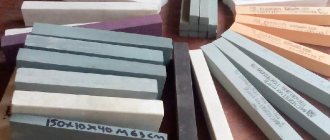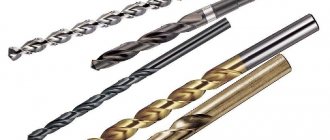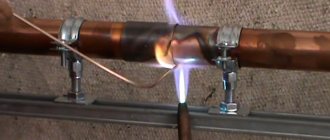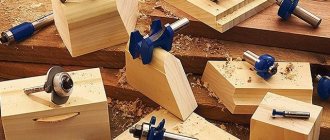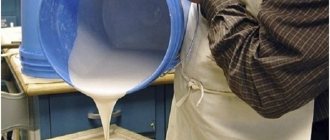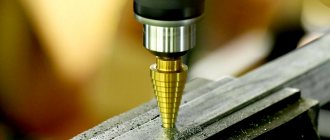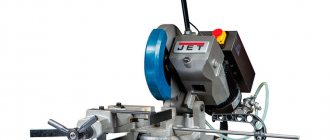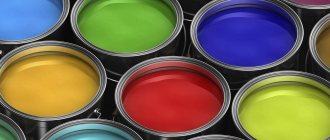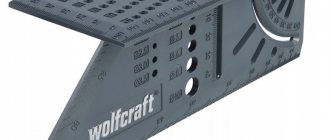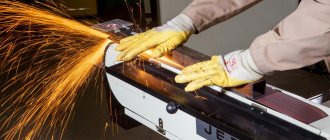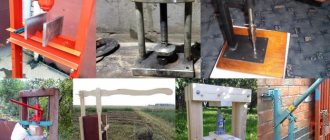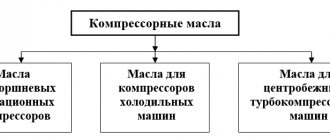A sharpening stone can be synthetic or natural, made of silicon, aluminum oxide, or diamond-coated. There are also water and oil stones for sharpening cutting surfaces.
The most popular manufacturers of whetstones are the USA, Russia, China and Japan. The standard surface grain parameters of a tool in the latter country are recognized throughout the world and are considered an accurate indicator of its effectiveness.
The price of sharpening stones varies - from 116 rubles to infinity. If we take the optimal price-quality ratio of the product, then its cost will be 3-6 thousand rubles.
Sharpening stone: what is it, what does a whetstone mean?
A sharpening stone is a tool that belongs to the category of universal ones and is used for the full maintenance of knives, razors, scissors and other objects with a cutting edge.
They are considered the optimal choice for sharpening because they allow you to independently choose the intensity of processing of the cutting edge and adjust the pressure force - this is the main difference between sharpening stones and machines with high speeds, work on which often leads to damage to cutting tools.
The whetstone can come in different sizes, the smallest are called whetstones.
| Materials for making whetstones | Natural, synthetic |
| Coating grain | Small, medium, large |
| Types of whetstones | Diamond, ceramic, water, abrasive, emery and others |
| Production | Japan, Russia, USA, China |
| Price | From 300 rubles and above |
Grinding stone grit: table
When choosing a sharpening stone, pay attention to its grain size - a parameter that indicates the level of aggressiveness of the impact on the sharpening surface; its characteristics and types are presented in the table.
Too large grains on the surface of the whetstone leave grooves/scratches on the cutting surface; this is unacceptable for some materials and tools. And professionals consider a sharpened surface to be ideal if it is free of burrs and any other defects. Therefore, the coarse grain size of the stone is suitable for rough repair and restoration work.
If you use a sharpening stone with a fine-grained surface, the quality of the work will be very high, but it will take a really long time to get the desired result. Experienced sharpeners recommend having sharpening stones with different grit levels available in order to start the process with rough sharpening and finish with bringing the cutting surface to “ideal”.
Stones from the Small NANIWA Flattening Stone series of various grain sizes
What is grit
Grit, grit is the level of grit of sharpening stones. This technical parameter is indicated in numbers, for example: if we are talking about a stone with a grain size of 120 grit, then it is used for rough sharpening of the cutting surface (coarse grain), finishing the sharpening work with fine grain stones (1200, 3000, 8000 grit).
What is emery
Linguists never tire of arguing about the origin of this word. Some argue that it has Old Russian roots and means a battle ax or a large club. Most likely, others who talk about ancient Turkic word formation are right. From this language, emery has a single and simple interpretation - a stone for grinding. This mineral was indeed mined in Greece and Turkey, but has long been supplanted by new, more technologically advanced abrasives.
But for a “handy” person, as well as for most ordinary people, this term means, first of all, a machine or even a modest machine tool, equipped with an engine and sanding wheels. Sharpening a tool is its main purpose. That's why these devices came to be called sharpeners.
In fact, the scope of application of emery is much wider. With its help, you can cut workpieces when it comes to a thin and extended range of material (wire, fittings, pipe, etc.). Often these machines are used solely for manual grinding or polishing purposes. In general, for removing a layer of material from a workpiece that can be held freely in your hands, sandpaper is the best option. Moreover, they are often used in the process of shaping parts, especially flat ones.
For ideal sharpening of some types of tools, turning cutters, for example, a diamond wheel is installed on the sharpener. But even in this case, the presence of a regular sanding wheel is necessary. With its help, preliminary processing of the cutter is carried out to form the necessary angles and remove burrs. Only the cutting edges on the carbide plate and the groove, if needed, are processed with diamond.
The many applications of the sharpener are made possible by the variety of characteristics of sanding wheels and their electric drives. The latter provide the necessary rotation speed and power sufficient to perform a particular operation.
What types of sharpening stones for knives are there?
Sharpening stones for knives are divided into two main types - natural and synthetic.
| Natural | Synthetic |
| Consist of minerals mined as minerals | Made from heavy-duty materials bonded together at high temperatures during processing |
| Two subspecies are considered popular - Arkansas and Japanese | There are 3 main subtypes - diamond, water and ceramic |
| There are 3 strength classes - soft, medium, hard | Features a long service life |
Water
Sharpening water stones (wet) belong to the category of artificial (synthetic), made from carbide and oxides of silicon, aluminum, and chromium. The production technology of this tool is such that the presence of particles of different sizes in the structure of the stone is not allowed - this negatively affects the results of sharpening cutting devices.
Depending on what binder material is used in production, water stone can have different hardness. For example, if the “bundle” is ceramic, then this indicator will be high, and if bakelite is used, it will be lower.
The peculiarity of a water (wet) whetstone is the need to soak it before starting work. Depending on the grit level of a particular instrument, soaking time can vary from 5 minutes (coarse grain) to 15 minutes (fine grain). You can tell that the tool is ready for use by looking at the air bubbles in the water - as soon as they stop forming, you can start sharpening the cutting surfaces.
Russian water stones Petrograd Water stones RUBANKOV.NET Sharpening water stones GRINDERMAN Chinese water stone
After soaking, the grinding surface is an accumulation of a mass of water, tiny metal particles and abrasive chips. This ensures uniform sharpening of the entire cutting surface.
Emery
Emery whetstones are used for electric machines that are equipped with grinding wheels (“emery pads”). At home, you should use white emery stones - they are durable, suitable for sharpening soft metals, and can be used for straightening knives and scissors. The composition of the material is soft, the temperature when the metal rubs against the stone is low, and the result is a fairly high-quality sharpening of tools.
There are also green sanding stones that are designed for working with hard metals. They have a high friction temperature, so they are not used for sharpening kitchen knives and scissors - scale will instantly appear on the blade, and the cutting surface will be hopelessly damaged.
Green grinding wheel White grinding wheel
Sandstone grits can be 8, 12, 16, 25 and 40, with 8 being the finest surface grit and 40 being the coarsest.
Diamond
Diamond is recognized as the hardest mineral in the world, it is used in the manufacture of sharpening tools with different grain sizes. The working layer of this mineral is made very thin, because the material is too expensive, but this does not affect the service life of the sharpening stones. It is believed that you can use such a sharpening tool for 10 years or more.
Diamond sharpening stones act very aggressively on the cutting surface and, although they allow you to complete the process in a few minutes, they quickly render it unusable and cause breakage of knives and scissors. Experts recommend that beginners limit themselves to medium-grained bars without such coating.
The difference between a diamond sharpening stone is that its surface is not clogged with foreign particles , so after use the tool is simply rinsed with cold water.
Watch the video about budget diamond sharpening stones:
A really high-quality stone of this type is quite expensive, but if you buy cheaper analogues, the surface will wear away very quickly. Accordingly, the service life will be reduced significantly.
Ceramic
The most modern type of abrasive stones is ceramic, in the production of which special materials are used (they are also used for the production of microcircuits). Ceramic can be used directly to make bars for sharpening cutting surfaces or an abrasive surface.
Sharpening tools on ceramics takes a long time and slowly; often such stones have a specific shape, which allows craftsmen to sharpen needles, nail scissors, fishing hooks, and blades. To begin work, ceramic stones are not wetted with water, but must be washed at the end of the process.
Ceramic stone (alumina ceramic) Fine Grit Tojiro F-472 – Ceramic water stone
Natural
The most popular are Arkansas and Japanese. Arkansas stones are a natural combination of quartz and rocks. The materials for its manufacture are mined in America, but their reserves are strictly limited, so the cost of such an instrument is always very high.
The second subtype of natural stone is Japanese waterstone. The material is mined in many regions of the country, but due to restrictions on its extraction, the cost of a sharpening tool will be “obscenely high.”
Professional natural stone Arkansas Translucent 1200 grit Japanese water stone S-3000/1000 on a stand
Oily
Oil sharpening stones are made from durable ceramics and have a longer service life because a more durable binder material is used in production. The peculiarity of oil whetstones is the variety of their shapes, which makes it possible to work with non-standard tools such as “bread” knives and serrated ones.
The surface of the stones has absolutely the same grain size, and this significantly speeds up work on them. There is also a drawback: it is impossible to achieve a “mirror” surface of the blade; it is better to use them at the “grinding” stage, when you need to make the blade thinner or remove small defects from its surface.
Watch the video review of Washita natural oil stone:
Round
Round sharpening stones are used for working on machine tools. They can be made from different materials, but more often they are synthetic - the machine produces too high speeds, so the hardness of the device must be maximum so that the blade or the stone itself does not collapse during operation.
The slipper type of tool is also available in small sizes; it is a cylinder that can be used to sharpen any knives. Manufacturers warn that it is impossible to achieve a perfect result with such stones, but they are effective as a “correction”.
Round whetstone
Diamond wheels, design, advantage
Thanks to the physical and chemical properties of diamond and its functional potential, it successfully restores the cutting capabilities of the tool and quickly returns it to working condition. Products of this type are distinguished by cost-effective cutting capabilities and productive dimensional accuracy. These qualities have found worthy use in various spheres of life (industry, everyday life, etc.).
Moreover, diamond wheels, as an abrasive sharpening material, are used for sharpening and finishing cutters, drills, saws, etc. In addition, they are used to process and polish various types of surfaces. The main advantage in their use is simplicity, accuracy, speed and cleanliness of processing. And what is also important, it has little wear and tear - it is durable.
By their design, diamond discs are presented in the form of a body and an applied diamond-bearing layer, which consists of an appropriate powder, a binder and a filling material. The body of the product can be made of black or non-ferrous alloy. polymer. In such circles, two types of diamonds are used: artificial and technical (natural).
Moreover, they are presented in the form of individual crystals or powder. It is known that about 2/3 of the diamonds used in the industry in the form of powder are used for the manufacture of disks, bars and other tools. To hold the diamond powder on the disk, special binders are used that firmly hold the individual granules together.
The manufacturer currently offers the consumer three options for discs on organic, ceramic and metal bonds. The first type of wheel is used for grinding cutting plates and other blanks made of hard materials. They wear out quickly during operation. Discs of the second type are used for finishing tools (cutters, knives, etc.).
Products with metal bonds have sufficient heat resistance, strength and a long service life, but occasional salting is considered a disadvantage; as a result, editing is required.
Stones for sharpening knives: the best by manufacturer
The best manufacturers of stones for sharpening knives are considered to be Russia, Japan, China and the USA; Soviet-made tools can still be found on sale, and many professionals prefer them.
Russian made: Petrograd, Grinderman, Gritalon
Sharpening stones, which are produced in Russia, are distinguished by the correct price-quality ratio.
Of the most popular, it is worth highlighting:
| Name | Description | Photo |
| "Petrograd" | This brand produces silicon carbide stones that are distinguished by a variety of surface hardness. It is important that the degree of graining exactly corresponds to Japanese standards - they are recognized throughout the world as the best. | |
| "Grinderman" | The production is located in St. Petersburg, the company not only produces various sharpening tools, but also provides full service. | |
| "Gritalon" | They produce synthetic abrasive tools that can be used both for sharpening machines and for manual work. The material used in production is silicon carbide. |
Japanese: Suehiro, YOSHIKIN, Yaxell, Samura
Sharpening stones made in Japan are usually used for manual work and with water; the most famous brands of such tools are:
- Suehiro;
- Yoshikin;
- Yaxell;
- Samura
The difference between such stones is that when sharpening cutting surfaces, new layers of abrasive are constantly “opened”, and particles of the previous ones are mixed with water and have the best possible effect on the blade.
Sharpening stone Samura Sharpening stone Yaxell Sharpening stone Global MinoSharp from the manufacturer Yoshikin Sharpening water stone Suehiro
The Japanese produce sharpening stones with different degrees of grain, so when using a tool with fine grains at the last stage, it makes it possible to bring the cutting surface to perfect condition without the additional use of pastes, felt and dressing slings.
Japanese water stones are distinguished by the highest productivity, which can only be compared with diamond tools. But the latter increases the risk of excessive thinning of the blade at the final stage of finishing the cutting surface.
Japanese whetstone grit standards are recognized by international organizations and are used for designation by most manufacturers.
Soviet
Soviet sharpening stones are bars of absolutely regular shape, onto which a coating of abrasive material (base – silicon) was applied. You can still find Soviet sharpening stones and whetstones on sale at flea markets - they are considered high quality and “eternal.”
On the territory of the USSR, they used their own, individual markings, which are radically different from modern ones.
What was indicated on each product:
- dimensions;
- accuracy class;
- manufacturer (each had its own mark);
- dimensions;
- hardness level;
- structure characteristics;
- product type;
- material used in manufacturing;
- grain level.
Microcorundum block for straightening USSR razors, 1970
Chinese: Ganzo
Chinese sharpening tools include silicon carbide and aluminum oxide stones, which are characterized by fairly high quality, long service life and low cost. The most famous manufacturer is Ganzo. Such tools are especially good for sharpening ordinary kitchen knives - their grit level does not exceed 1000 grit, which allows you to bring the blade to the desired sharpness with one whetstone.
Recently, sharpening stones from China made of vacuum ceramics and boron carbide have appeared on the market. They have an almost eternal service life; even with prolonged sharpening of the tool, they do not wear out.
Chinese sharpening tool Ganzo
Arkansas: Dan's, Smith's, Lansky
Three companies stand out from the manufacturers:
- Dan's;
- Smith's;
- Lansky
Arkansas is a state in America where abrasive material is mined and grindstones are produced. Mineral reserves in this part of the country are already greatly depleted, so the cost of the tool is very high even by the standards of the Americans themselves. However, Arkansas stones have always been popular and are now considered the best quality on the market.
Lansky whetstone Smith's whetstone Dan's whetstone
Marking and selection of grinding wheels
Grinding wheels are characterized by geometric shape (type), type of abrasive material, its grain size, bond type, hardness, etc. And when choosing a grinding wheel, such characteristics as the degree of hardness or structure may be more significant than the type of abrasive. The complete markings for grinding wheels contain:
- circle type;
- its dimensions;
- type of abrasive material;
- grit number;
- degree of hardness;
- structure (the relationship between the abrasive, bond and pores in the body of the tool);
- type of ligament;
- maximum speed;
- accuracy class;
- imbalance class.
| Type | Dimensions, mm | Abrasive | Graininess | Hardness | Structure | Link | Speed, m/s | Accuracy class | Unbalance class |
| 1 | 150x16x32 | 25A | F46 | L | 6 | V | 35 | B | 3 |
The marking of wheels, made in accordance with various editions of GOSTs, has some differences regarding the designations of grain size, hardness, grade of abrasive and binder. Manufacturers label their wheels differently, using old or new designations and excluding certain characteristics. Below are examples of deciphering the designations of grinding wheels.
Grinding wheel markings
1 - abrasive material: 25A - white electrocorundum; 2 - grain size (old marking): 60 (according to GOST it should be 63) - 800-630 microns; 3 - hardness: K - medium-soft; 4 - structure: 6 - average; 5 - ligament: V - ceramic; 6 — imbalance class: 2
Grinding wheel markings
1 - abrasive material: 25A - white electrocorundum; 2 - grain size (old marking): 60 (according to GOST it should be 63) - 800-630 microns; 3 - hardness: KL - depending on the circumstances, can be K or L - medium-soft; 4 - ligament: V - ceramic.
Grinding wheel designation
1 - abrasive material: 25A - white electrocorundum; 2 - grain size (old marking): 25 - 315-250 microns; 3 - hardness (old marking): SM2 - medium-soft; 4 - structure: 6 - average; 5 - bond (old marking): K - ceramic; 6 — accuracy class: B 7 — imbalance class: 3
Marking of abrasive wheel
1 - abrasive material: 25A - white electrocorundum; 2 - grain size: F46 - average size 370 microns; 3 - hardness: L - medium-soft; 4 - structure: 6 - average; 5 - ligament: V - ceramic; 6 — peripheral speed: 35 m/s; 7 — accuracy class: B 8 — imbalance class: 3
Grinding wheel designation
1 - abrasive material: 14A - normal electrocorundum; 2 - grain size: F36-F30 - extended range including F36 (average size 525 microns) and F30 (average size 625 microns); 3 - hardness: QU - depending on the circumstances, it can be medium-hard, hard, very hard; 4 - bond: BF - bakelite with reinforcing elements; 5 — imbalance class: 1
The choice of grinding wheel brand should be made taking into account all its characteristics.
Types of grinding wheels and their sizes
| 1 | 150x16x32 | 25A | F46 | L | 6 | V | 35 | B | 3 |
The following types of grinding wheels are produced (in parentheses the designations according to the old GOST 2424-75 are given):
- 1 (PP) - straight profile;
- 2 (K) - ring;
- 3 (3P) - conical;
- 4 (2P) - double-sided conical;
- 5 (PV) - with one-sided groove;
- 6 (ChTs) - cup cylindrical;
- 7 (LDPE) - with two grooves;
- 9 - with double-sided groove;
- 10 (PVDS) - with double-sided groove and hub;
- 11 (CHK) - conical cup;
- 12 (T) - disc-shaped;
- 13 - disc-shaped;
- 14 (1T) - disc-shaped;
- 20 - with one-sided conical groove;
- 21 - with double-sided conical groove;
- 22 - with a conical recess on one side and a cylindrical recess on the other;
- 23 (PVK) - with conical and cylindrical grooves on one side;
- 24 - with conical and cylindrical recesses on one side and a cylindrical recess on the other;
- 25 - with conical and cylindrical recesses on one side and conical on the other;
- 26 (PVDK) - with conical and cylindrical recesses on both sides;
- 27 - with a recessed center and reinforcing elements;
- 28 — with a recessed center;
- 35 - straight profile, working with the end;
- 36 (PN) - with pressed-in fasteners;
- 37 - ring with pressed fasteners;
- 38 - with one-sided hub;
- 39 - with a double-sided hub.
Some types of grinding wheels
All types are described in GOST 2424-83.
In addition to the profile shape, circles are characterized by the size DxTxH, where D is the outer diameter, T is the height, H is the diameter of the hole.
Types of diamond and CBN wheels are regulated by GOST 24747-90. The marking of the shape of CBN and diamond wheels consists of 3 or 4 characters that carry information about the cross-sectional shape of the body, the cross-sectional shape of the CBN-containing or diamond-bearing layer, the location of the latter on the wheel, and the design features of the body (if any).
Designation of a grinding wheel with the shape of the body 6, the shape of the diamond-bearing or elboron-containing layer A, with the location of the diamond-bearing or elboron-containing layer 2, with the design features of the body C.
Designation of diamond or CBN grinding wheels
All types are described in GOST 24747-90.
The type and size of the wheel are selected based on the type and configuration of the surfaces being ground, as well as the characteristics of the equipment or tool used.
The choice of wheel diameter usually depends on the spindle speed on the selected machine and on the ability to provide an optimal peripheral speed. Specific wear will be the least with the largest diameter circle size. Smaller wheels have fewer grains on the working surface, each grain has to remove more material, and therefore they wear out faster. When working with small diameter wheels, uneven wear is often observed.
When choosing a diamond wheel, it is advisable to pay attention to the width of the diamond-bearing layer. When working “on the pass” it should be relatively large. When grinding using the “plunge” method, the width of the diamond coating should be commensurate with the width of the surface being processed. Otherwise, ledges may appear on the surface of the circle.
Abrasives
| 1 | 150x16x32 | 25A | F46 | L | 6 | V | 35 | B | 3 |
The most commonly used abrasive materials for grinding wheels are: electrocorundum, silicon carbide, CBN, diamond.
Electrocorundum
Available in the following grades: white -
22A
,
23A
,
24A
,
25A
(the higher the number, the higher the quality);
normal - 12A
,
13A
,
14A
,
15A
,
16A
;
chromium - 32A
,
33A
,
34A
;
titanium - 37A
;
zirconium - 38A
and others.
Silicon carbide
.
Two types of silicon carbide are available: black - 52С
,
53С
,
54С
,
55С
and green -
62С
,
63С
,
64С
, differing from each other in some mechanical properties and color. Green carbide is more fragile than black carbide.
Diamond
widely used for the manufacture of diamond grinding wheels used for finishing and sharpening carbide tools, processing parts made of hard alloys, optical glass, ceramics, etc. It is also used for dressing grinding wheels made of other abrasive materials. When heated in air to 800°C, diamond begins to burn.
Diamond grinding wheels
Elbor
(CNB, CBN, borazone, cubonite) is a cubic modification of boron nitride. Having the same hardness as diamond, it is significantly superior to the latter in heat resistance.
CBN wheels for full-profile sharpening of band saws
Abrasive materials are characterized by hardness, granularity, abrasive ability, strength, heat and wear resistance. High hardness is the main distinguishing feature of abrasive materials. Below are comparative characteristics of microhardness and heat resistance of the main abrasive materials.
| Materials | Microhardness, kgf/mm2 |
| Diamond | 8000-10600 |
| Elbor (cubic boron nitride, CBN) | 8000-10000 |
| Boron carbide | 4000-4800 |
| Silicon carbide green | 2840-3300 |
| Silicon carbide black | 2840-3300 |
| Monocorundum | 2100-2600 |
| Electrocorundum white | 2200-2600 |
| Titanium electrocorundum | 2400 |
| Chromium electrocorundum | 2240-2400 |
| Electrocorundum normal | 2000-2600 |
| Corundum | 2000-2600 |
| Quartz | 1000-1100 |
| Titanium carbide | 2850-3200 |
| Wolfram carbide | 1700-3500 |
| Hard alloy T15K6, VK8 | 1200-3000 |
| Mineral ceramics TsM332 | 1200-2900 |
| High-speed steel hardened P18 | 1300-1800 |
| Carbon tool steel sealed U12 | 1030 |
| Carbon steel sealed St.4 | 560 |
| Materials | Heat resistance, °C |
| Elbor | 1300-1500 |
| Diamond | 700-900 |
| Silicon carbide | 1200-1300 |
| Electrocorundum | 1300 |
| Boron carbide | 500-600 |
| Mineral ceramics | 1200 |
| Carbide alloy VK8 | 900 |
| High speed steel P18 | 600 |
| Carbon tool steel U12 | 200 |
The choice of one or another abrasive material is largely determined by the characteristics of the material being processed.
| Abrasive | Application |
| Electrocorundum normal | It has high heat resistance, good adhesion to the binder, mechanical strength of the grains and significant viscosity necessary for performing operations with variable loads. Processing of materials with high tensile strength (steel, ductile iron, iron, brass, bronze). |
| Electrocorundum white | It is more homogeneous in physical and chemical composition, has higher hardness and sharp edges, has better self-sharpening ability and provides less roughness of the processed surface compared to normal electrocorundum. Processing of the same materials as normal electrocorundum. Provides less heat generation, higher surface finish and less wear. Grinding of high-speed and alloy tool steels. Processing of thin-walled parts and tools, when the removal of heat generated during grinding is difficult (stamps, gear teeth, threaded tools, thin knives and blades, steel cutters, drills, woodworking knives, etc.); parts (flat, internal and profile grinding) with a large contact area between the wheel and the surface being processed, accompanied by abundant heat generation; for finishing sanding, honing and superfinishing. |
| Silicon carbide | It differs from electrocorundum in its increased hardness, abrasive ability and fragility (the grains have the form of thin plates, as a result of which their fragility increases during operation; in addition, they are less well held by the bond in the tool). Green silicon carbide differs from black silicon carbide in increased hardness, abrasiveness and fragility. Processing of materials with low tensile strength, high hardness and brittleness (hard alloys, cast iron, granite, porcelain, silicon, glass, ceramics), as well as very viscous materials (heat-resistant steels and alloys, copper, aluminum, rubber). |
| Elbor | It has the highest hardness and abrasive ability after diamond; has high heat resistance and increased fragility; inert to iron Grinding and finishing of hard-to-cut steels and alloys; fine grinding, sharpening and finishing of high-speed steel tools; finishing and final grinding of high-precision workpieces made of heat-resistant, corrosion-resistant and high-alloy structural steels; finishing and final grinding of machine guides and lead screws, the processing of which is difficult with conventional abrasive tools due to large thermal deformations. |
| Diamond | Has high wear resistance and reduced heat resistance; chemically active towards iron; has increased fragility and reduced strength, which promotes self-sharpening; synthetic diamond of each subsequent grade (from AC2 to AC50) differs from the previous one in higher strength and less fragility. Grinding and finishing of brittle and high-hard materials and alloys (hard alloys, cast iron, ceramics, glass, silicon); fine grinding, sharpening and finishing of carbide cutting tools. |
Diamond wheels are capable of processing material of any hardness. However, you need to keep in mind that diamond is very fragile and does not withstand shock loads well. Therefore, it is advisable to use diamond wheels for final processing of carbide tools, when it is necessary to remove a small layer of material and there is no shock load on the grain. In addition, diamond has relatively low heat resistance, so it is advisable to use it with a coolant.
Grain
| 1 | 150x16x32 | 25A | F46 | L | 6 | V | 35 | B | 3 |
Abrasive grain size is a characteristic of grinding wheels that determines the cleanliness of the resulting surface. The grain is either an intergrowth of crystals, or a separate crystal, or its fragments. Like all solids, it is characterized by three dimensions (length, width and thickness), but for simplicity we operate with one - width. Many parameters depend on the grain size - the amount of metal removed in one pass, the cleanliness of the processing, grinding performance, wheel wear, etc.
According to GOST 3647-80, in the designation of the grain size of grinding wheels, the grain size is indicated in units equal to 10 microns (20 = 200 microns), for micropowders - in microns with the addition of the letter M.
In the new GOST R 52381-2005, which basically corresponds to the international standard FEPA, the grain size of grinding powders is indicated by the letter F with a number. The higher the number, the finer the grain and vice versa.
Diamond and CBN wheels have their own grain size designations. Their grain size is indicated by a fraction, the numerator of which corresponds to the size of the side of the upper sieve in microns, and the denominator corresponds to the size of the lower sieve.
The table below shows the ratios of grinding wheel grit according to old and current standards.
| Designation according to GOST 3647-80 | Designation according to GOST 9206-80 (diamond powders) | Size, microns | FEPA | |
| Designation for abrasive materials, excluding flexible materials | Average size, microns | |||
| F 4 | 4890 | |||
| F 5 | 4125 | |||
| F 6 | 3460 | |||
| F 7 | 2900 | |||
| 200 | 2500/2000 | 2500-2000 | F 8 | 2460 |
| F 10 | 2085 | |||
| 160 | 2000/1600 | 2000-1600 | F 12 | 1765 |
| 125 | 1600/1250 | 1600-1250 | F 14 | 1470 |
| 100 | 1250/1000 | 1250-1000 | F 16 | 1230 |
| F 20 | 1040 | |||
| 80 | 1000/800 | 1000-800 | F 22 | 885 |
| 63 | 800/630 | 800-630 | F 24 | 745 |
| 50 | 630/500 | 630-500 | F 30 | 625 |
| F 36 | 525 | |||
| 40 | 500/400 | 500-400 | F 40 | 438 |
| 32 | 400/315 | 400-315 | F 46 | 370 |
| 25 | 315/250 | 315-250 | F 54 | 310 |
| F 60 | 260 | |||
| 20 | 250/200 | 250-200 | F 70 | 218 |
| 16 | 200/160 | 200-160 | F 80 | 185 |
| 12 | 160/125 | 160-125 | F 90 | 154 |
| F 100 | 129 | |||
| 10 | 125/100 | 125-100 | F 120 | 109 |
| 8 | 100/80 | 100-80 | F 150 | 82 |
| 6 | 80/63 | 80-63 | F 180 | 69 |
| 5, M63 | 63/50 | 63-50 | F 220 | 58 |
| F 230 | 53 | |||
| 4, M50 | 50/40 | 50-40 | F 240 | 44,5 |
| M40 | 40/28 | 40-28 | F 280 | 36,5 |
| F 320 | 29,2 | |||
| M28 | 28/20 | 28-20 | F 360 | 22,8 |
| M20 | 20/14 | 20-14 | F 400 | 17,3 |
| M14 | 14/10 | 14-10 | F 500 | 12,8 |
| M7 | 10/7 | 10-7 | F 600 | 9,3 |
| M5 | 7/5 | 7-5 | F 800 | 6,5 |
| M3 | 5/3 | 5-3 | F 1000 | 4,5 |
| 3/2 | 3-2 | F 1200 | 3,0 | |
| 2/1 | 2-1 | F 1500 | 2,0 | |
| F 2000 | 1,2 | |||
| 1/0 | 1 and | |||
| 1/0,5 | 1-0,5 | |||
| 0,5/0,1 | 0,5-0,1 | |||
| 0,5/0 | 0.5 and | |||
| 0,3/0 | 0.3 and | |||
| 0,1/0 | 0.1 and | |||
The choice of wheel grain size should be determined by a number of factors - the type of material being processed, the required surface roughness, the amount of allowance to be removed, etc.
The smaller the grain size, the cleaner the processed surface is. However, this does not mean that finer grain size should be preferred in all cases. It is necessary to choose the grain size that is optimal for a particular processing. Fine grain gives a higher surface cleanliness, but at the same time can lead to burning of the processed material and clogging of the wheel. Using fine grains reduces grinding performance. In general, it is advisable to choose the largest grain size provided that the required cleanliness of the treated surface is ensured.
If it is necessary to reduce surface roughness, the grain size must be reduced. Larger allowances and increased productivity require larger grits.
In general, the harder the material being processed and the lower its viscosity, the higher the wheel grit can be.
| Grit numbers according to GOST 3647-80 | Grit numbers according to GOST R 52381-2005 | Purpose |
| 125; 100; 80 | F14; F16; F20; F22 | Dressing of grinding wheels; manual roughing operations, cleaning of blanks, forgings, welds, castings and rolled products. |
| 63; 50 | F24; F30; F36 | Preliminary round external, internal, centerless and flat grinding with surface roughness of 5-7 cleanliness classes; finishing of metals and non-metallic materials. |
| 40; 32 | F40; F46 | Preliminary and final grinding of parts with surface roughness of 7-9 classes of cleanliness; sharpening cutting tools. |
| 25; 20; 16 | F54; F60; F70; F80 | Finish grinding of parts, sharpening of cutting tools, preliminary diamond grinding, grinding of shaped surfaces. |
| 12; 10 | F90; F100; F120 | Diamond finishing grinding, sharpening of cutting tools, finishing grinding of parts. |
| 8; 6; 5; 4 | F150; F180; F220; F230; F240 | Finishing of cutting tools, thread grinding with fine pitch threads, finishing grinding of parts made of hard alloys, metals, glass and other non-metallic materials, fine honing. |
| M40-M5 | F280; F320; F360; F400; F500; F600; F800 | Final finishing of parts with an accuracy of 3-5 microns or less, roughness of 10-14 cleanliness classes, superfinishing, final honing. |
Hardness of grinding wheels
| 1 | 150x16x32 | 25A | F46 | L | 6 | V | 35 | B | 3 |
The hardness of the grinding wheel should not be confused with the hardness of the abrasive material. These are different concepts. The hardness of the grinding wheel characterizes the ability of the bond to hold abrasive grains from being torn out under the influence of the material being processed. It depends on many factors - the quality of the bond, the type and shape of the abrasive, and the wheel manufacturing technology.
Wheel hardness is closely related to self-sharpenability—the ability of an abrasive wheel to regain its cutting ability by breaking down or removing dull grains. During operation, the wheels intensively self-sharpen due to the splitting of the cutting grains and their partial chipping out of the bond. This ensures that new grains enter into the work, thereby preventing the appearance of burns and cracks in the material being processed. The lower the hardness of the wheel, the higher the self-sharpening ability. Based on hardness, circles are divided into 8 groups.
| Name | Designation according to GOST 19202-80 | Designation according to GOST R 52587-2006 |
| Very soft | VM1, VM2 | F, G |
| Soft | M1, M2, M3 | H, I, J |
| Medium soft | SM1, SM2 | K, L |
| Average | C1, C2 | M, N |
| Medium-hard | ST1, ST2, ST3 | O, P, Q |
| Solid | T1, T2 | R, S |
| Very hard | VT | T,U |
| Extremely hard | Thu | V, W, X, Y, Z |
The choice of grinding wheel hardness depends on the type of grinding, the accuracy and shape of the parts being ground, the physical and mechanical properties of the material being processed, the type of tool and equipment. In practice, in most cases, medium-hard wheels are used, which have a combination of relatively high performance and sufficient durability.
A slight deviation of the wheel characteristics from the optimal one leads either to burns and cracks of the sharpened surface, when the hardness of the wheel is higher than required, or to intense wear of the wheel and distortion of the geometric shape of the sharpened tool, when the hardness of the wheel is insufficient. Wheels for sharpening tools with inserts made of hard alloys must be selected with particular precision in terms of hardness.
Here are some recommendations that may be useful when choosing grinding wheels based on hardness. When sharpening tools with carbide cutters, the wheel must have high self-sharpenability. Therefore, when sharpening them, wheels of low degrees of hardness are used - H, I, J (soft), less often K. The more tungsten or titanium carbides in the hard alloy, the softer the grinding wheel should be.
When it is required to maintain high precision of shape and size, preference is given to those types of grinding wheels that have increased hardness.
When using cutting fluids, grinding uses harder wheels than when grinding without cooling.
Wheels on a bakelite bond should have a hardness 1-2 levels higher than wheels on a ceramic bond.
To prevent burns and cracks, softer circles should be used.
Structure
| 1 | 150x16x32 | 25A | F46 | L | 6 | V | 35 | B | 3 |
The structure of a tool is usually understood as the percentage of the volume of abrasive material per unit volume of the tool. The more abrasive grain per unit volume of the wheel, the denser the structure of the tool. The structure of the abrasive tool affects the amount of free space between the grains.
| Structure | Designation |
| Dense | 1, 2, 3, 4 |
| Average | 5, 6, 7 |
| Open | 8, 9, 10 |
| Highly porous | 11, 12 |
When sharpening cutting tools, it is advisable to use wheels with more free space between the grains, as this makes it easier to remove chips from the cutting zone, reduces the possibility of burns and cracks, and facilitates cooling of the tool being sharpened. For sharpening cutting tools, wheels on a ceramic bond of 7-8th structure are used, and wheels on a bakelite bond - 4-5th structure.
Bunch
| 1 | 150x16x32 | 25A | F46 | L | 6 | V | 35 | B | 3 |
In the manufacture of grinding wheels, abrasive grains are bonded to the base and to each other using a bond. The most widely used binders are ceramic, bakelite and vulcanite.
Ceramic bond
It is made from inorganic substances - clay, quartz, feldspar and a number of others by grinding them and mixing them in certain proportions.
Ceramic bonded grinding wheels are marked with the letter ( V
).
Old designation - ( K
)
The ceramic bond gives the abrasive tool rigidity, heat resistance, shape stability, but at the same time increased fragility, as a result of which it is undesirable to use wheels with a ceramic bond under shock loads, for example, during rough grinding.
Bakelite bond
mainly consists of an artificial resin - bakelite.
The marking of circles with bakelite has a Latin letter ( B
) in its designation.
The old designation is ( B
). Compared to ceramic, bakelite binder has greater elasticity and elasticity, heats the metal being processed less, but has lower chemical and temperature resistance, and worse edge resistance.
Bakelite bond can be with reinforcing elements ( BF
, old designation -
BU
), with graphite filler (
B4
, old designation -
B4
).
Vulcanite bond
is a vulcanized synthetic rubber.
The abrasive wheel is marked with the letter ( R
).
The old designation is ( B
).
In most cases, abrasive wheels on ceramic or bakelite bonds are used. Both have their own characteristics, which determine their choice for a particular job.
The advantages of a ceramic binder include strong fixation of grain in the binder, high heat and wear resistance, good preservation of the working edge profile, and chemical resistance. The disadvantages are increased fragility, reduced bending strength, high heat generation in the cutting zone, and, consequently, a tendency to burn the material being processed.
The advantages of the bakelite bond are elasticity, good self-sharpening of the wheel due to the reduced strength of grain fixation in the bond, and reduced heat generation. The disadvantages are more intense wear compared to a ceramic bond, reduced edge resistance, low resistance to coolants containing alkalis, low heat resistance (bakelite begins to become brittle and burn out at temperatures above 200°C).
Accuracy class
| 1 | 150x16x32 | 25A | F46 | L | 6 | V | 35 | B | 3 |
The accuracy of the dimensions and geometric shape of abrasive tools is determined by three AA
,
A
and
B.
_
For less critical abrasive processing operations, class B
.
A
tool is more accurate and of higher quality .
For work in automatic lines, on high-precision and multi-circuit machines, high-precision AA
. It is distinguished by higher accuracy of geometric parameters, uniformity of grain composition, balance of abrasive mass, and is made from the best grades of grinding materials.
Unbalance class
| 1 | 150x16x32 | 25A | F46 | L | 6 | V | 35 | B | 3 |
The imbalance class of a grinding wheel characterizes the imbalance of the wheel mass, which depends on the accuracy of the geometric shape, the uniformity of mixing of the abrasive mass, the quality of pressing and heat treatment of the tool during its manufacturing process. Four classes of permissible imbalance of the mass of circles have been established ( 1
,
2
,
3
,
4
). Unbalance classes have nothing to do with the accuracy of balancing the wheels and flanges before installing them on the grinding machine.
When using the content of this site, you need to put active links to this site, visible to users and search robots.
Literature
Sharpening stones for machine tools
Sharpening stones for machine tools vary in shape and composition. They can be used for sharpening not only cutting tools, but also any other metal products. Most often you can find a stone made of silicon carbide, but the most durable is considered to be CBN - an abrasive material based on boron nitride, which makes the tool as durable as possible.
All sharpening stone attachments for machines are divided into two types: black – the most resistant/strong and green. The first is used for rough sharpening of the cutting surface, while green is used to bring it to the desired state.
Sharpening machine 150 mm Titan BNS25-150
2 Device for sharpening turning tools
Sharpening tools involves not only wheels, but also the use of additional devices - boring machines.
Jig boring machines bore, drill, countersink, cut internal and external threads, grind cylindrical surfaces and trim ends.
Tool sharpening machine
A distinctive feature of the machines is a horizontal (or vertical) spindle, which makes axial feed movements. The necessary tool is fixed into the spindle hole - a boring bar with a cutter, a reamer, a drill, a milling cutter, etc.
- horizontal boring;
- coordinate boring;
- diamond boring;
- vertical boring.
Specialized models of jig boring machines:
- Jig boring machine 2D450.
- Jig boring machine 2V440A.
- Jig boring machine 2431.
- Jig boring machine 2421.
2.1 Sharpening technology
- Main back surface.
- Auxiliary back surface.
- Front surface.
- The radius of curvature of the ring.
At the end, the sharpening angles are checked using a template.
Types of sharpening of cutters
To obtain an even and smooth edge, the tool must be constantly in motion along the grinding surface. With this kind of work, the circles will last longer.
The tool can be processed dry or with water. The flow of water must be sufficient and continuous. A dry tool should not be immersed in water, as this may cause destruction of the working edge.
- fine-grained whetstone (technical oil is also used);
- copper wheel (boron carbide paste and technical oil are also used).
Finishing can only be done on cutting tools (edge width up to 3mm).
2.2 Safety precautions
- Do not use grinding wheels whose operation is accompanied by beating.
- The tool rest should be securely fixed closer to the circle.
- Use a tool rest to support the cutter.
- Do not press the cutter too hard (uneven heating can cause cracks; under high pressure the wheel can quickly deteriorate).
- Do not sharpen without a protective guard.
- Wear safety glasses.
- The workplace must have local ventilation.
Which sharpening stone to choose for kitchen knives
For kitchen knives, it is better to choose a water sharpening stone - they “work” faster and allow you to straighten the cutting surface without changing tools until you get the desired result. But you need to remember that some knife materials can rust when in contact with water, which will hopelessly ruin your kitchen tool. In this case, it is better to use oil sharpening stones - sharpening takes a long time, but it is always of high quality, and the blade of the knives does not rust.
As for the grit level of the whetstone, 1500 grit is sufficient for kitchen knives, because 240 grit is too coarse an abrasive surface that greatly thins the knife blade.
Green structural elements
However, tools made of non-hard grades of steel are not always used in production and even in everyday life. If we take, as an option, drilling systems, and even the same hammer drills, then an ordinary electrocorundum emery wheel will not be able to effectively cope with sharpening the drill. In this case, manufacturers offer so-called “green” sandpaper mugs. They are named so, naturally, because of their color.
The important aspect is that this type of equipment cannot be used when working with, say, scissors or standard kitchen knives. Upon contact, a very high temperature appears, which leads to instant overheating of the steel and the tool losing its cutting properties. Simply, you can throw it away. It is for this reason that it is not recommended to use a green emery wheel in everyday life. And its cost is disproportionately higher than white.
If we talk about geometric dimensions, they can be exactly the same as those of the electrocorundum analogue. But they can also significantly exceed them, since the main task is to ensure a complex technological process in production, where heavy equipment and machines are used. As a result, for example, the mounting holes can be 76 mm, 127 mm, or even 203 mm.
What parameters need to be considered when choosing an emery wheel?
- External diameter. And here the principle, the more the better, does not work.
- Equipment power. On more powerful machines, consumables can be installed with greater grain size and abrasion resistance.
- Bore hole diameter. Many inexperienced specialists simply forget about this indicator.
- Grit, which, as noted, determines the accuracy of sharpening the tool.
- And an important aspect is the manufacturer. Naturally, it is best to purchase products from well-known brands.
Thus, if you approach the issue of choosing an abrasive as responsibly as possible, and even better, consult with professionals, then the product will last a long time and effectively, paying for itself many times over.
Source: abraflex.ru
How to choose a sharpening stone for tools
The selection of a whetstone should be made taking into account the following parameters:
- Abrasive grain size . It can be small, medium and large. The latter is necessary to eliminate chips on the surface of the cutting tool, because only coarse grain size can remove layers of damaged metal.
- Material of manufacture . In terms of characteristics and service life, synthetic sharpening stones are many times superior to natural ones, but this ratio is appropriate to take into account only when choosing a device from the middle price category. If you are planning to purchase a high-quality sharpening stone, then you should pay attention to Japanese manufacturers.
- Dimensions . If a stone is purchased for sharpening kitchen knives, then the shape and size practically do not matter. But if you constantly use a sharpening device on hikes, at work you should choose small sizes, even pocket-sized options.
What grit to choose for sharpening a knife
The grain size for sharpening a knife should be selected depending on the goals pursued; experts say that you need to have at least 3 stones in your arsenal:
- 120 grit – for rough metal processing;
- 1000 grit – to level the surface;
- 2000 grit – for straightening the blade.
But practitioners believe that knives can be sharpened with a stone with a grain size of 1500 grit. Such kitchen tools come straight from the store sharpened and only need to be slightly adjusted during use.
Characteristics of sanding wheels
The classification of emery wheels is based on their geometric shape. Based on this feature, products can be cylindrical (CC) and conical (CC) cups, disc-shaped (T) disks and others. In everyday life, a flat disk shape with a straight profile (PP) is most often used. Abrasives with a double-sided conical profile (2P) are less relevant in the home workshop, but they are still in demand for sharpening the teeth of saws and other tools.
The next most important parameter of an abrasive disc is its geometric dimensions. It includes diameter, thickness and fit. The latter indicates the size of the mounting hole in the product and in most cases is equal to 32 mm. Exotic abrasives with mounting diameters of less than 10 mm, used for machinist finishing of precision parts, as well as discs with a 76 mm mounting, used for cylindrical and flat grinding, are typical for industry and are difficult to adapt to economic needs. Therefore they are not considered here.
For the same reason, this publication does not focus on discs whose width is not included in the range of 10, 16, 20 and 25 mm. These sizes are optimal for use in private households.
How to make a whetstone with your own hands
You can make your own whetstone from ceramic tiles or silicon carbide and epoxy glue, but first you need to prepare a template and then follow the instructions.
From ceramic tiles
You need to take a fragment of ceramic tile measuring 30x8 cm; if there are mortar residues on the back side, then they must be removed. The relief side of the ceramic tile is ground down on a grinding wheel or sand-lime brick by active friction. During this process, fine abrasive dust will be formed - it must be removed periodically. You can bring the surface completely smooth with regular sandpaper.
As soon as the back side of the ceramic tile becomes smooth, the remaining abrasive particles are removed/washed off and completely dried. The whetstone is ready, you can use it to sharpen your kitchen knives, but you will definitely have to sharpen them until they are impeccably sharp and smooth.
Watch the video on how to make a whetstone for finishing a knife from ceramic tiles:
Made of silicon carbide powder and epoxy glue
You need to purchase 100 g of silicon carbide powder, prepare a wooden board with cuts on one side to fix the abrasive bar, and epoxy glue. For ease of work, you should wear medical gloves and use syringes.
Execution order:
- Mix 6 cubes of resin and 1.2 ml of glue (epoxy glue preparation kit) in a bowl.
- Mix thoroughly and add a little abrasive powder.
- Stir again and add silicon carbide powder again - this must be done until the dry material runs out.
Next, you need to prepare a cardboard box of the desired shape (a rectangular or square block is needed) and pour the prepared adhesive mixture into it. Cover the top with a board, sawn side down, and press down with a weight.
Cardboard boxes of the desired shape
After 3-4 days, the glue will completely harden - and the block is ready for use. You will need to clean its edges and trim it with a file. To make the surface abrasive, you need to drop water on it and rub the frozen surface with a piece of glass with a small amount of sand.
Homemade sharpening stone for knives is ready
Such homemade sharpening stones do not have a long service life, but can be useful in force majeure circumstances.
Stone for dressing water stones
When using water stones, irregularities form on their surface, which impairs the quality of sharpening knives and other cutting tools; you can correct them:
- sandpaper;
- silicon carbide powder;
- sand;
- diamond block.
But it is easier and faster to sharpen the sharpening tool with special stones - synthetic water stones with diagonal cuts along the surface of the same depth. They can be hand-held or tabletop. In the first case, straightening is carried out with a stone with cuts, in the second, the damaged whetstone is ground/straightened on a fixed one.
The most popular stones for dressing water stones:
| Name | Description | Photo |
| Table stone from the Large series NANIWA Flattening Stone for Sharpening Stones (Truing Stone) | It has the same grain size (24 grit) and is made of silicon carbide. | |
| Table stones from the JUUMA Flattening Stones series | Made from aluminum oxide, they are a series of four stones of different grain sizes. It is noteworthy that they are able to rule even each other. | |
| Suehiro Hand Stones | They have a medium grain size (200 grit), are intended for straightening synthetic water stones, correcting both subtle unevenness and deep “pits” and grooves. |
Stones for knife
Ceramic and diamond stones are used for knife blades in the kitchen. They are characterized by fine grain and therefore cannot sharpen the cutting surface efficiently - usually such kitchen devices are used for quickly straightening the blade.
The service life of such blades is short, the abrasive coating on them is thin. Some manufacturers produce a device with three stones - coarse, medium and fine, which makes it possible to increase the level of sharpening of kitchen knives.
Shallow plate. Marking 12A220
In appearance, the plate differs noticeably from the cup in depth; as a rule, the height is only 18 mm. In the other everything is standard, diamond grinding wheel 12A220 150*10*2*18*32 160/125 - plate with a diameter of 150 mm, width of the diamond layer 10 mm, thickness 2 mm, depth - 18 mm (shallow), fit 32 mm. Grain 165/100 is quite coarse compared to others.
Plates come in 150 mm and 125 mm diameters.
They are excellent for sharpening tools; moreover, they can be used to sharpen carbide tips on circular saws. In order to sharpen such tips, you will need a thin plate so that the edge can fit between the teeth.
How much does a whetstone cost?
A whetstone can cost 116 rubles or several thousand - it all depends on several parameters:
- material of manufacture;
- manufacturer;
- surface graininess.
The average price of a whetstone, where the price/quality ratio can be called optimal, is 3-6 thousand rubles.
